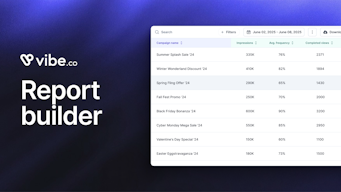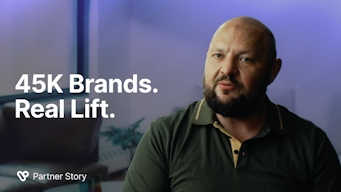Political Advertising on Streaming TV
Get out the vote!... with CTV
Aaaaah political ads… everyone’s favorite video content. Who doesn’t love hearing a litany of catastrophes about to befall us unless this or that city council member gets re-elected? The alarmist content and poor production quality of political TV ads meant to appeal to the broadest audience (which often means to no audience) have been the unwieldy burden of both political advertisers trying to create content someone will actually watch, and constituents who would genuinely prefer to watch paint dry.
The advent of agile digital TV ads with real-time reporting may have finally brought an answer to the decades long conundrum: spend millions of dollars on TV ads no one will watch or save the money and run the risk of getting your message drowned out?
To see how we got here, let’s look at the unique challenges posed by political ad content, how traditional media shifts have made political advertising even more difficult, how CTV can answer some of those challenges, and overall trends in political ad spending by channel.
Political TV ads are unique
Political ads aired on television are unique in that they are painfully un-unique. Why? Because consultants, pollsters, and candidates themselves, are inherently cautious. The fear of a joke or innovative creative direction going too far has led to some ad agencies literally taping “one-size-fits-all” political ads that candidates can then edit with their campaign information. Now it might just be us, but that does NOT sound like a recipe for riveting television.
Another real challenge for political advertisers is geo-location, because while it’s important for Gary’s Car Dealership ads to be aired in locations close to Gary’s Car Dealership, it’s crucial to precisely serve political ads in districts directly impacted by specific races, which is especially challenging when district maps change every 10 years (and yes, you guessed it, they just changed again this year.) Good luck achieving that level of targeting with traditional TV DMAs (Designated Market Areas)!
Finally, it’s important to consider today's incredibly rapid 24 hour news cycle. When all it takes is a midnight tweet to shape international policies and debates, it is more important than ever to work with agile media channels that will allow your campaign to shift its message according to the news, polls, engagement reporting, etc. That level of flexibility is virtually impossible to achieve when TV ad blocks for political campaigns have to be booked months in advance.
Traditional media is cracking down on political ads
So you’ve decided your creative is strong enough to break stereotypes around corny political ads and you decide to move forward with your linear TV and traditional digital marketing plan. Now you can just sit back and watch the votes roll in, right? Wrong!
After one of the most fraught presidential election cycles in recent history, many legacy media organizations have had to instate increasingly stringent policies surrounding political ads, going so far as to ban them outright at Twitter and Spotify. Here’s a short list of political ad policy updates:
- Twitter: banned political ads
- Spotify: banned political ads on its paid tiers
- Meta: banned interest targeting for political ads
- Google: limited behavioral targeting for political ads
Meanwhile, social media CPMs are steadily rising: “On Facebook, at times, you see CPMs that aren’t too far off CTV CPMs which makes [CTV] more attractive in that you’re getting a high-quality view vs. exposure where someone is just scrolling through a feed,” says Mark Positano, vice president of media at data agency i360, which provides voter data to campaigns and agencies.
Sounds like you should just stick to ole faithful: linear ads on the boob tube, right? Not if you want to spare your audience a severe case of ad fatigue, which surveys show is especially severe with political ads.
The CTV opportunity
Here’s the thing about CTV: it still has the prestige, easy access, and longer formats that linear TV does with a bunch of extra features that affect every stage of your campaign, from A/B testing capabilities to easier launches to real-time reporting.
It’s also come a long way in a very short time: the huge leap in television cord-cutting and streamed content viewership sparked by the COVID lockdown has remained steady as viewers return to offices, family gatherings, and business trips, across demographics. According to research from Leichtman Research Group, 82% of US households already have access to it, and the numbers are only growing, for all age groups.
In fact, the continued infatuation for video content on OTT and CTV has led to a dramatic increase in content inventory. Premium channels, time slots, and audiences are an easily accessible part of any CTV ad strategy, which can now be scaled to meet your engagement goals in an impactful way.
Not only are more people watching OTT content than ever before, they are also watching it more attentively, as evidenced by the current CTV ad VCR (Video Completion Rate) of 97%. Who knew anyone watched entire videos all the way through anymore? Maybe that’s because CTV ads allow for interactive engagement in a whole new way. QR codes, interactive content, and cross-device retargeting allow immediate and direct action. “You mean someone could watch a CTV ad and donate directly to my campaign from their La-Z-Boy?” Yes, we do.
Within 2020 alone, there was over a 500% increase from the primary election cycle covering February through July, to the general election cycle covering August through November. In 2024, primary coverage spend is already dwarfing 2020 general election budgets.
"If the current trends of explosive growth in CTV viewership continue, we could see a tipping point where CTV makes up nearly half of political digital ad spend as soon as 2024," says Grace Briscoe, vice president of candidates and causes at Centro, a digital ad placement firm that works with hundreds of campaigns across the country.
Industry experts agree that starting a campaign early, with plenty of time to tinker with content and deployment strategy is the way to go.
Are you ready to try something new? Register for a Vibe account today!


